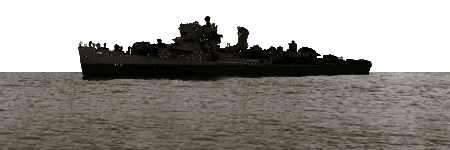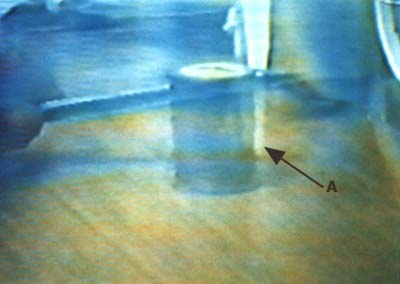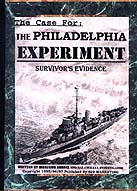Our superb offer for exam 70-622 guide and 70-272 exam product prepares you in fantastic way, you can also prepare from exam 70-169 exams notes, 70-228 ebook dumps and exam 642-627 certification material with our guarantee of success.
 |
|
What They Didn't Want You To Know by Joe Turner (Continued) Using the standard scientific method, Marshall carefully read Rinehart's account and researched each scientific detail. The crux of it all came down to the use of an intense electromagnetic field that would create a mirage effect of invisibility by refracting light. This light would be refracted by the conditions caused in the air by the field that would include dielectric breakdown of the air, ionization, and even a zeemanzing of the atoms. Not having the equipment to cause such conditions, Marshall calculated that if he could find a material that would refract light, he could at least prove whether or not the basis for the Philadelphia Experiment had any foundation in science. As fate would have it, he did have such a material - a special plastic called 'diffraction film' - and he discovered, much to his amazement, that it worked. 
(above) Photograph showing the defraction film and its invisibility effect upon a spool of thread. Notice that the table top and pen are visible through the spool (A). This simple experiment proved that defraction was a viable and scientifically sound method of simulating invisibility.
Marshall found other scientific data to corroborate Rinehart's account, including a photograph from Sandia
National Laboratories from the cover of the college text book, "Physics: Volume 2." The photograph shows a
particle accelerator device, that sits in water, surrounded eerily by the identical greenish-bluish glow said to have emanated from the Eldridge as the field generators were being turned on. The glow is described in this case as the result of the same condition that Rinehart mentioned - dielectric breakdown of the air near the surface of the water. Marshall's scientific research was good enough that he was invited in 1996 to present his findings in a scientific
colloquium sponsored by the biological and physical sciences department of Columbus State Community College.
This event is mentioned as part of a press release announcing that it could be
proven that the ONR had in fact been involved in a cover-up since Marshall's findings directly contradicted the official ONR statement in the last paragraph of the information sheet. It also
mentions that Marshall was to present his research on the Art Bell radio show. A copy of that release can be viewed at
www.iufog.org/updates/.
It was this event, and the discoveries leading up to it, that the Sightings episode was supposed to have been based on. If Marshall's research and
experiments were good enough to be presented in a colloquium sponsored by a college science department, why weren't
they good enough for a cable TV show increasingly becoming known more for its psychic ghost hunting? When
considered in that light, Marshall's suspicions of governmental interference are quite understandable.
But this was supposed to be different with "The Unexplained." Segment producer Mark Caras had bought Marshall's book and liked its focus on hard, documented evidence, instead of the wild stories
and speculation of most of the available material on the subject. Not only had Caras taken an interest in the story, he also played a minor role in Barnes' investigation against respected scientist and UFO researcher Jacques Vallee. Vallee had written an article debunking the Philadelphia Experiment called "Anatomy of a Hoax." The basis for the article was that Vallee found another witness to the event, a witness that said that he was there at the time that it was
supposed to have taken place and that it never did.
The article had been hailed as the best research on the subject by UFO pundits like Michael Corbin, whose ParaNet newsgroups host
discussions on such topics on the internet. But Caras knew that Marshall's book exposed the Vallee article as a fraud since Vallee had not checked Dudgeon's background or statements -
statements that proved to be false when checked against navy documents and other historical information. Marshall unearthed admissions made by Vallee himself concerning his being taught on
how to write disinformation, as well as Vallee's links to the
shadowy Aviary. The Aviary consists of various former CIA, DIA, INSCOM, and AFOSI agents and connected scientists.
Allegedly dedicated to infiltration, studying and disinforming the UFO
community as double agents, links for this group can be found at such sites as www.nacomm.org/news/1996/aviary.html. The Society for Scientific Exploration, that issued last year's
report calling for a further study of UFOs, is an Aviary infiltrated organization, as is their Journal of Scientific Exploration that published both the report and Jacques Vallee's fraudulent
article.
"What are you going to do? Put it on the internet?" Haisch asked. Sensing a point of consternation, Marshall held his cards close to his vest.
"It's not a matter of what I'm going to do," he replied, "It's a matter of what you should do if you want to live up to these high standards that your publication brags about on your web site." Haisch hung up.
Caras was intrigued by Marshall's gutsy, 'go get the truth' attitude. When considering including the Anatomy
article in The Unexplained episode, Caras called Bernhard Haisch and then reported back to Marshall on Haisch's disposition. "You're really on to something," he allegedly told the investigator. "Haisch was
unnerved by your call, and nervous about my doing an episode about all this." Caras also told Marshall that after failing to return calls to his office, Jacques Vallee called five minutes after Caras left
him a message that he was going to proceed with the episode featuring Marshall's statements about him without Vallee's opportunity for rebuttal. During the ensuing conversation, Vallee said that he was "sorry that he had anything to do with the Philadelphia Experiment" and worried about his reputation in the UFO and venture capital communities as a result of Marshall's investigation. He had forwarded Marshall's report to his attorney, an action that Marshall considered to be in preparation for some kind of legal attack to keep him silent by tying the issue up in court.
Based on this new information from Caras, Marshall decided to strike against Vallee publicly in a information warfare styled campaign that would only be held back until Caras decided if he was
actually going to include the Anatomy issue in the episode. If he was, Marshall would wait until Caras had a chance to get his interview in the can, knowing that once the campaign began, Vallee
would be loathed to talk to anyone.
When the time came for Marshall to be taped for his appearance, he was handed a release form that seemed to stray away from Marshall and Caras' prior agreement. Recognizing it as a standard release giving the show the freedom to edit as they pleased, Barnes reminded Caras about their arrangement which Caras said he would
still honor. The shoot that day included a demonstration of Marshall's experiments for the camera and the photos from "Physics: Volume 2" and a lengthy interview with Marshall. Jean Claude Ba, a
physics professor was also interviewed. Marshall later sent Caras a copy of his dramatic experiment showing a sheet of diffraction film causing a full scale replica of the Santa Maria to look as transparent as a phantom ship.
As the time approached for the episode to air, Caras began to act cryptically. First was his mention of having a computer animation appear to 'dramatize' the Eldridge becoming invisible.
When Marshall asked about the use of the video of his experiment with the Santa Maria, Caras acted like it was almost non-existent. "His attitude was like it either wasn't good enough of a
dub or that it didn't show what I said it did. Regardless, it was a disingenuous response but I chose not to push the issue. I know how producers can be with their production toys."
The next thing to happen was Caras telling Marshall that the executive producer Jonathan Towers, had him
make 'changes' in the script because it was 'too weird'. "Don't worry," Caras told Marshall, "you'll still get the truth across." Marshall was beginning to worry but having been informed by
Caras that there would be no coverage over the Vallee issue because of lack of available time, Marshall had begun his campaign against Vallee on the internet, the very medium that Haisch had
apprehensively asked about. Through a network of cyber journalists, the story about Vallee's fraud and Haisch's attempt to keep it secret slowly began to appear in various forms until now if
you do a search on the net combining the words 'fraud', 'hoax' and 'anatomy', depending on the search engine, you'll get articles about Jacques Vallee like www.ufomind.com/updates/1998/jun/m08-010.shtml.
By August 21 the first wave of Marshall's campaign was over and he was beginning his middle game. But that night he stopped to see what Mark meant when he said he had to make some 'script changes'. What he saw was as far from the truth as you could get. In fact, the Office of Naval Research could have written the script themselves.
|

 Marshall sent an eight page report to JSE editor Bernhard M. Haisch, informing him of his investigation against Vallee, the evidence that he had acquired and his intention to expose Vallee, with the
suggestion that Haisch put a disclaimer on the JSE web page for the article's abstract. When Marshall called Haisch to discuss the matter, Haisch acted as if Marshall's investigation was inconsequential and flatly refused to inform readers of his findings. Haisch seemed more
concerned about the possibility of Marshall taking his report to the internet.
Marshall sent an eight page report to JSE editor Bernhard M. Haisch, informing him of his investigation against Vallee, the evidence that he had acquired and his intention to expose Vallee, with the
suggestion that Haisch put a disclaimer on the JSE web page for the article's abstract. When Marshall called Haisch to discuss the matter, Haisch acted as if Marshall's investigation was inconsequential and flatly refused to inform readers of his findings. Haisch seemed more
concerned about the possibility of Marshall taking his report to the internet.